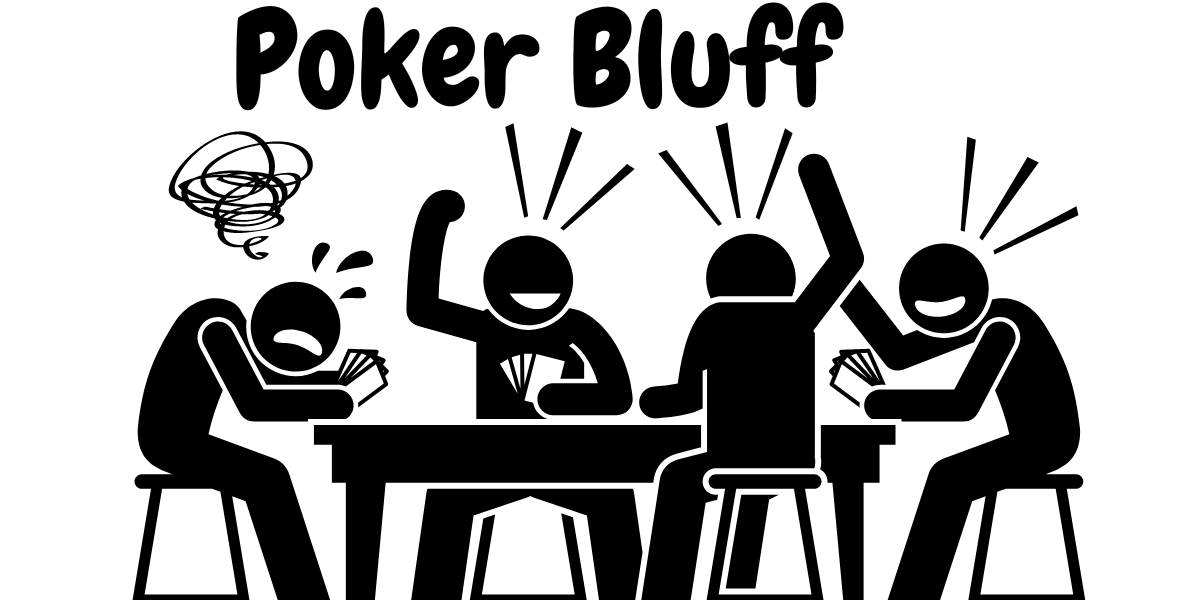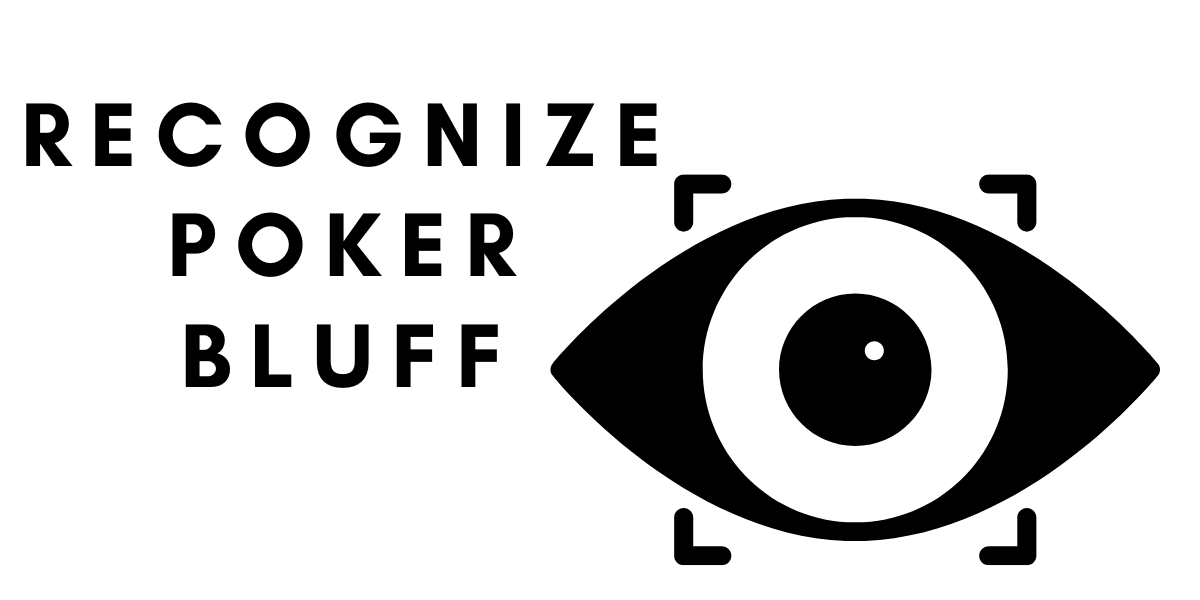Becoming a Poker Bluff Expert: Top 10 Tips for Successful Bluffing in Poker
Bluffing is one of the most fascinating aspects of poker. Bluffing in poker is the art of deceiving opponents to make them either grow the pot or fold their hands. A successful poker bluff can determine whether you win or lose. Those who can bluff correctly in poker have an edge over others.

Top 10: Bluffing Right in Poker
We have summarized 10 valuable tips on becoming a poker bluff expert from choosing the right moment to mastering your body language. Here you will find everything you need to know to outsmart your opponents at the poker table.
Assess Your Opponents Correctly
The first step to successful bluffing is understanding your opponents at the table or in the virtual poker room. Observe their gameplay and reactions, trying to identify strengths and weaknesses.
Some players are more conservative and harder to deceive, while others are risk-prone and more likely to call or raise. Take your time to figure out which of your opponents are susceptible to a poker bluff and how they will react.
Think in Blinds
What is a poker bluff worth? View the poker chips on the table not as a sum of money, but as the number of Big Blinds you can make with them. It takes some time to adopt this mindset, but it aids in bluffing in poker.
For example, if the blinds are £2 and £5, a bet of £200 is worth exactly 40 Big Blinds. This is easier to relate to a pot of about 100 Big Blinds. Thinking in blinds helps you with bluffing in poker as you think more game-oriented. If you instead consider what you could buy for the amount, you might hesitate and reveal your poker bluff. In return, you might sometimes notice an opponent pondering over the chips in front of them or in the middle of the table. You could use this to your advantage and drive them out of the round with a big bluff.
Tell a Credible Story
A successful poker bluff relies on a convincing story, so learn the art of storytelling. Your deception at the table must match the game situation and the actions and bets you have made so far. Suddenly switching from a conservative to an aggressive playing style arouses suspicion if, for instance, it doesn’t match the flop. Plan your bluffs well in advance so that the maneuver seamlessly integrates into your previous gameplay.
For example, if your opponent has a broad possible range and opens the round from the first position, while you as the Big Blind check the flop, only to dramatically raise the opponent’s bet afterward. This smells of a bluff since you only have a narrow range and didn’t react to the flop.
On the other hand, the poker bluff execution looks different if you face the possibility of a complete flush draw with a check on the turn. Your intention might be to raise the opponent’s bet. To continue telling this story credibly, place another bet on the river if the opponent responds with a call on the turn.
Control Your Body Language
Body language only plays a role in live poker but is an immensely important aspect of bluffing. The term “poker face” isn’t just a figure of speech: Control your emotions and show no signs of nervousness or excitement whatsoever. Always maintain a neutral and minimal expression and gestures, and exude as much calmness and confidence as possible to make it harder for opponents to read your moves.
Possible “tells”, or revealing signs that give away information about your hand, include: trembling hands, dilated eyes, twitching at the corner of the mouth or around the eyes, bouncing legs or knees, restlessness or nervousness, a change in voice tone, noticeable talking or sudden silence, playing with the cards, or uncontrolled hand movements like touching the mouth or hair. Many poker professionals use various tools to neutralize their appearance. From sunglasses to baseball caps and hoodies to scarves or even gloves, players use everything.
It is recommended to maintain a consistent posture at the game table and always adhere to it, regardless of the cards you have. For instance, sit up straight when you receive your cards and then keep your hands close to your body, avoiding unnecessary movements and unnecessary talking.
Display Appropriate Gameplay Behavior
The image is everything at the game table. If you constantly bluff in poker, your deceptive moves will quickly be recognized as such, and your playing style will soon be seen as “loose”. However, the appropriate gameplay behavior for poker bluffs is that of a competent, confident player capable of bluffing but primarily plays conservatively. This also means that you shouldn’t necessarily seize every opportunity to bluff in poker. If the chance arises several times in a row, the risk increases that the opponent will see through your move. Conversely, you might receive bad cards most of the time and quickly gain a reputation for only playing the nuts.
Put yourself in the shoes of your opponents and try to view your own gameplay at the poker table from an outsider’s perspective. Can other players pin you down to specific starting hands? Are you seen as “loose aggressive” or “tight aggressive”? The more often your opponents call you, the less your gameplay is suited for poker bluffs.
Pay Attention to Your Playing Position
In poker bluffing, both the game situation and your position matter, and there isn’t a one-size-fits-all strategy that you can rigidly adhere to. You always need to adapt to bluff successfully.
However, it can be simplified as follows: As the last player in the round, you have the advantage of observing your opponents’ play first, allowing you to adjust your bluffs accordingly. In an early position, on the other hand, you play more cautiously and only occasionally resort to a poker bluff.
- Do not bluff against Small Blind and Big Blind. Players in these positions don’t fold often enough.
- Don’t bluff players who have thrown caution to the wind and are “full tilt” into risky game situations, as their gameplay is unpredictable.
- Take advantage of the appearance of “scare cards” on the board, which can unsettle many players, for example, over-cards and cards that visibly complete a draw.
- Bluff short-stack players since they don’t have enough capital to speculate or respond appropriately.
- At the same time, avoid super-short-stacks, as they want to stay in the game at any cost.
Poker Bluff with the Right Bet
To bluff properly in poker, you must carefully choose the right bet size. The correct amount often determines success or failure. As a rule of thumb, an unexpectedly high bet causes players to hesitate, for example, if you bet one and a half times the pot instead of just half.
Those uncertain about bluffing in poker often only bet 10-15% of the pot on the river and wonder why the call often negates their deception. Occasionally, it’s wise to make a smaller bet to keep your opponent on their toes. But if you want to bluff successfully, you shouldn’t be afraid to move chips. Your bet shouldn’t differ much, if at all, from what you would place with an actual good hand; otherwise, you make it too easy for your opponent to detect your bluffs.
Caution with Multi-Way Pots
It’s much easier to deceive a single opponent than to attempt a poker bluff against multiple opponents. The most significant and legendary poker bluffs in card game history all occurred heads-up. Experienced players limit their bluffs to this scenario. With several players in the round, the chances dramatically increase that someone else holds and wants to play a good hand. Until you have an idea of the potential hands your opponents might hold, the opportunity for a bluff in a multi-way pot often passes.
Of course, you can attempt a poker bluff now and then when no one shows clear interest in the pot’s chips. But as soon as more than one player calls, you almost always have to fold.
Play Consistently
Consistency is another key element of bluffing in poker. Ensure your actions and bets convey a consistent message and avoid contradictory behavior so as not to arouse suspicion from your opponents. This also means that you shouldn’t necFor instance, if you play a hand as a bluff and later make the same move with an actual strong hand, it enhances your credibility and makes your bluffs harder to detect.
Practice Makes Perfect
As with all skills in poker, bluffing requires plenty of practice. Take time to refine and test your bluffing techniques. Play in different situations and against diverse opponents to further develop your bluffing in poker. Analyze your bluffs after each hand and learn from your experiences.
How to Recognize a Poker Bluff

Conversely, recognizing poker bluffs is also crucial for a successful game. If you master bluffing in poker, you simultaneously learn to see through your opponents’ deceptive moves.
Observe your opponents’ playing behavior and watch for suspicious changes in their gameplay. If a player suddenly becomes aggressive or behaves unusually, this could be a sign of an attempted poker bluff.
Study possible tells such as nervousness and uncertainty to notice when someone wants to pretend they have a strong hand. Pay close attention to the body language of the opponents, but also keep in mind that professional poker players are often very good at controlling their emotions.
Another indicator of poker bluffs is the timing of bets. Observe how players place their bets. For example, if a player suddenly makes significant bets without a clear reason for the situation, there’s an increased likelihood of an intimidation attempt.
Table dynamics can also help you recognize bluffs. If a player is in a challenging position or on a losing streak, he might be tempted to use a bluff to get out of the situation. Pay attention to the mood at the table and the previous hands to better gauge the players’ behavior.
Analyzing previous hands and gathering information about your opponents can also help you detect bluffs. If a player has bluffed frequently in the past, it’s more likely they will bluff in the future. Use this information to make your decisions at the table and be better prepared for bluffs.
Recognizing poker bluffs requires attention, observation skills, and experience. The more you play and the better you get to know your opponents, the better you will be at detecting bluffs and adjusting your gameplay. Practice observing playing behavior, analyzing bets, studying body language, and hand analysis.
Mastering the Poker Bluff is Challenging
Bluffing in poker and other games like baccarat or blackjack remains a skill that is hard to master. The poker bluff as a move requires both strategic thinking and a delicate touch in judging the opponent. Poker bluff experts control their emotions and act coolly and calculatedly to tell a convincing story. However, even experienced players can unintentionally reveal their bluffs in stressful situations.
Judging the opponents always carries a risk, as you can only guess how your opponents will react. Through observation, patience, and analysis, you can come to understand the playing style, tendencies, and mindset, but you can never predict the behavior exactly.
The uncertainty in poker bluffing remains. Even if you have taken all factors into account and your bluff story appears convincing, there is always the risk of being exposed.
However, you gain confidence and expertise in bluffing by refining the strategic aspects.
Choose the right game situations and understand the game positions, the bets, and the course of the game. Proper timing and choosing the right opponents also lead to success.
Bluffing is an exciting and challenging technique in poker. With regular training and the application of these tips, you can enhance your bluffing skills.